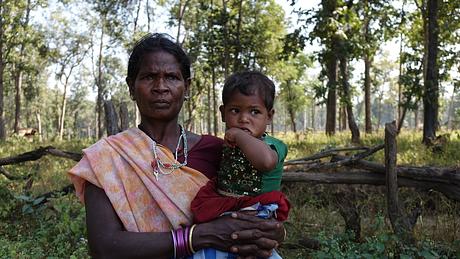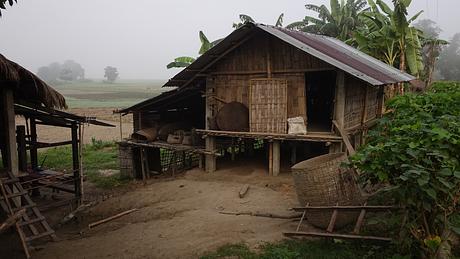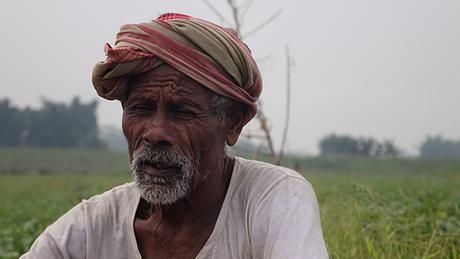Tribal conservationists in India's tiger reserves

The lives of hundreds of thousands of tribal people in Indian tiger reserves are being destroyed in the name of conservation. The Indian government is illegally evicting them from the land where they have always lived and that they have always protected.
They are accused of harming wildlife. But, far from killing tigers, many tribes worship them as gods and take care of their environment better than anyone else.
India’s tribal peoples have lived with and nurtured the unique flora and fauna of the Indian jungle for centuries. “We all have been living together as one: the forest, the animals and the tribes”, a Jenu Kuruba man said.
It’s no coincidence that so many tribes live in tiger reserves: They know how to coexist with the tiger, and they have carefully managed and protected their environments for generations. They are the best conservationists and guardians of the natural world.
The reason for this is that India’s tribespeople have a deep and close relationship with the forest, which they depend on for their livelihoods and survival. The forest is not just home. It is sacred, it is life, it is medicine, it is food. The tribes treat it with love and respect. A Chenchu man explained: “We love the forest as a child loves his mother.”
The forests are the home of gods and divinities for the tribal peoples. Jenu Kuruba have sacred places in the forest where they worship small statues made of mud. Mising tribes worship the river, sending out boats made of banana leaves containing offerings for the river deity.

Despite the thick and rich vegetation, tribal people do not need maps. They have an extraordinary and intimate knowledge of every tree, rock, or stream. Soliga know 45 different leaves just for use in cooking. They identify the smell of individual animals. They can deduce the temper of an elephant from the way it holds its trunk.
Most tribes have small fields for crops and collect fruits, roots, vegetables and honey, a favorite treat. (The Jenu Kuruba like honey so much that their name means “honey gatherers!”) Others live by fishing or, like the Mising, graze animals. Many tribes such as the Baiga and Soliga used to hunt and carry out shifting cultivation, until both practices were banned. For the Baiga, tilling the land with a plough was anathema – “like scratching the breast of Mother Earth.” Now they are forced to practise settled agriculture.

The tribes’ reciprocal relationship with the forest is based on their respect for the cycles of nature and their sense of responsibility for future generations. Their customs dictate that they should never take more than they need or waste anything. Many work on the principle of giving back to nature what they take from it. When they harvest honey from high in the trees, Soligas take some for themselves and leave some near the ground for the tigers, because “tigers cannot climb the trees and harvest honey.” Baigas take wood only from old trees, allowing saplings to grow and replace them. And as a Chenchu woman told us, “If outsiders come inside the forest, they will cut all the trees and take away all the fruits; we don’t cut the trees and we take just the fruits we need.”

Despite the claims of many conservationists, for tribal people, wildlife is not a threat or a danger. They laugh at the suggestion they are frightened of the tiger, telling us they have always lived together. Many tribes, such as the Chenchu, worship the tiger, considering it both a god and a member of their large spiritual family, which includes other animals such as panthers and bears. For others, such as the Baiga and the Mising, the tiger is seen as a companion with whom they share the forest. The Soliga explain that they are not scared when they come across a tiger. Even a Soliga child knows just to call it a “big dog” – apparently this insult is enough to drive it away!

Thanks to this acceptance of the tiger, the animals are thriving in areas where the tribal people have not been evicted. A recent census has shown that the number of tigers in one tiger reserve has increased way above the national average since the Soliga became the first tribe to have their rights to stay in a tiger reserve recognized.
Evidence proves that tribal peoples are better at looking after their environment than anyone else, and therefore the best placed to protect the tiger and its forests. In spite of this, current conservation practices threaten to destroy India’s tribal guardians and their natural heritage by illegally evicting communities from their ancestral homelands and criminalizing their subsistence activities.

For example, the Soliga tribe used to light controlled fires as part of their shifting cultivation technique, and this helped stop the spread of the invasive lantana plant. However, burning was banned by the government in the name of conservation, and now lantana is strangling the forest, leaving animals struggling to find food. A Soliga man explained: “We were the only ones who conserved the forest by burning litter fires, and we used to manage and control lantana. The Forest Department… doesn’t know how to protect our forest.”
“When we were here the forest was safe,” a Chenchu man told Survival. “When we were evicted, the forest was destroyed.”
For India’s tribal people, their link to their land is visceral, and the key to the tiger’s survival. “How can we live without the jungle?” a Baiga man asks. To that many Baiga have added: “How can the jungle live without us?”






